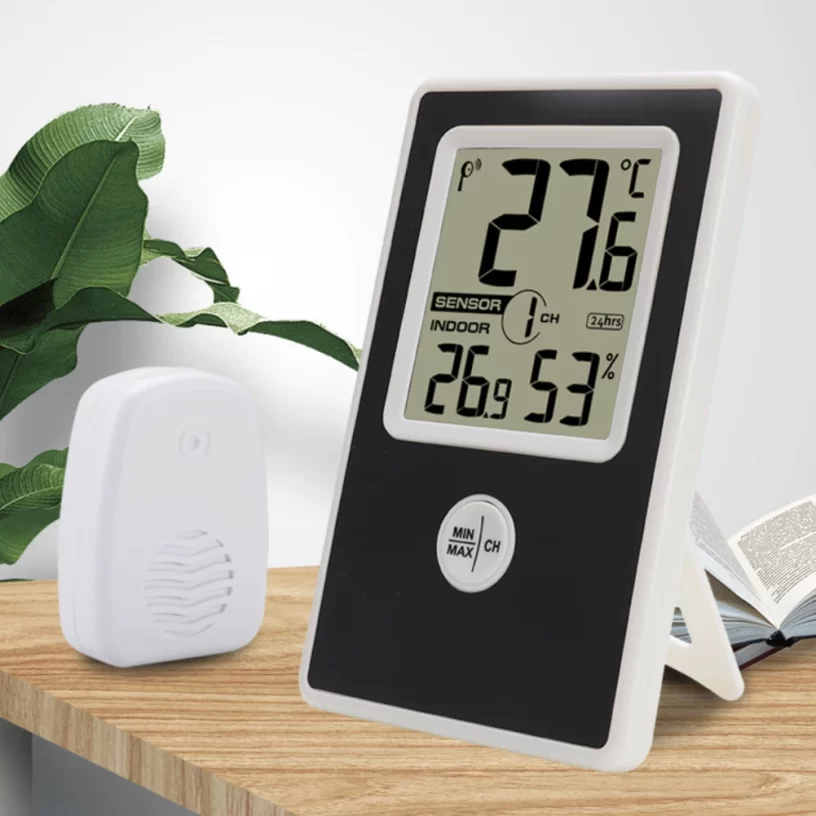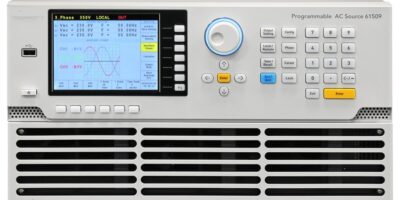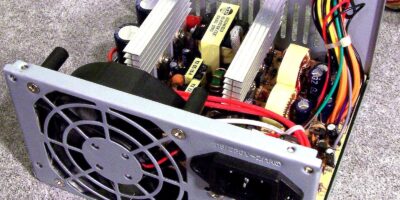Introduction
Semiconductor humidity sensors play a crucial role in detecting and measuring humidity levels in various environments. These sensors are integral to numerous applications across industries, ranging from automotive and consumer electronics to industrial automation and environmental monitoring. This comprehensive overview explores the types, applications, market dynamics, competitive landscape, trends, opportunities, and regional analysis of the semiconductor humidity sensors market.
Types of Semiconductor Humidity Sensors
Semiconductor humidity sensors measure moisture in the air by detecting changes in the physical properties of semiconductor materials. The primary types include:
1. Capacitive Humidity Sensors
- Working Principle: Measure humidity by detecting changes in the capacitance of a hygroscopic dielectric material placed between two electrodes.
- Features: High accuracy, wide humidity range, and stability. Common in HVAC systems and industrial controls.
2. Resistive Humidity Sensors
- Working Principle: Utilize changes in the resistance of a humidity-sensitive material as moisture levels vary.
- Features: Simple design, cost-effective, suitable for general-purpose applications like home appliances and consumer electronics.
3. Thermal Conductivity Humidity Sensors
- Working Principle: Measure the change in thermal conductivity of air due to humidity changes.
- Features: Fast response time, used in specific applications such as process control and meteorology.
4. Optical Humidity Sensors
- Working Principle: Employ changes in optical properties like refractive index or absorbance due to humidity variations.
- Features: High sensitivity, used in scientific research and precision measurements.
5. Piezoelectric Humidity Sensors
- Working Principle: Detect changes in mechanical properties of a piezoelectric material due to humidity.
- Features: Useful in specialized applications like structural health monitoring.
Trends
1. Integration with IoT
The integration of semiconductor humidity sensors with IoT platforms is a significant trend. This integration enables real-time monitoring and control of environmental conditions, providing valuable data for applications like smart homes, industrial automation, and environmental monitoring. IoT-enabled humidity sensors facilitate remote diagnostics, predictive maintenance, and energy management.
2. Advancements in MEMS Technology
Advancements in MEMS technology have led to the development of smaller, more energy-efficient, and highly accurate humidity sensors. MEMS humidity sensors are increasingly used in consumer electronics, automotive, and industrial applications due to their compact size and low power consumption.
3. Rising Demand in Wearable Devices
The increasing popularity of wearable devices for health and fitness tracking has driven demand for miniature humidity sensors. These sensors provide precise measurements of environmental conditions, enhancing the functionality of wearable technology.
4. Focus on Environmental Sustainability
Manufacturers are focusing on developing eco-friendly and sustainable humidity sensing solutions. This trend aligns with global environmental regulations and consumer demand for green technologies, leading to the development of sensors with low power consumption and environmentally friendly materials.
5. Enhanced Safety and Performance in Automotive Applications
Humidity sensors are becoming integral to advanced driver-assistance systems (ADAS) and electric vehicles (EVs). They contribute to enhanced safety and performance by ensuring optimal climate control and in-cabin air quality.
6. Development of Multi-Functional Sensors
The trend towards developing multi-functional sensors that combine humidity sensing with other capabilities, such as temperature and pressure measurement, is gaining traction. These sensors provide comprehensive environmental monitoring solutions for applications like HVAC systems and smart homes.
Market Dynamics
Growth Factors
- Technological Advancements: Innovations in sensor technology, including miniaturization and enhanced sensitivity, drive market growth.
- Increasing Demand in Consumer Electronics: The proliferation of smart devices and wearables integrating humidity sensing capabilities.
- Automotive Industry Expansion: Rising demand for advanced climate control systems and in-cabin air quality monitoring.
- Industrial Automation and IoT: Growing adoption of Industry 4.0 and IoT drives the need for precise environmental monitoring in industrial settings.
- Healthcare Applications: Increasing use of humidity sensors in medical devices and pharmaceuticals storage.
Challenges
- High Cost of Advanced Sensors: High development and manufacturing costs can be a barrier to widespread adoption, particularly in price-sensitive markets.
- Technological Limitations: Issues such as sensor drift, limited operating ranges, and sensitivity to contaminants can affect performance.
- Regulatory Compliance: Meeting regulatory standards, especially in automotive and medical applications, can be complex and costly.
- Market Saturation: In mature markets, intense competition can lead to price pressures and margin compression.
Receive the FREE Sample Report of Semiconductor Humidity Sensors Market Research Insights @ https://stringentdatalytics.com/sample-request/semiconductor-humidity-sensors-market/9495/
Market Segmentations:
Global Semiconductor Humidity Sensors Market: By Company
• STMicroelectronics
• TI
• NXP
• Guangzhou Aosong Electronic
• Shanghai Aisense
Global Semiconductor Humidity Sensors Market: By Type
• Capacitive
• Resistive
Global Semiconductor Humidity Sensors Market: By Application
• HVAC
• Industrial
• Automobile
• Weather Station
• Others
Regional Analysis of Global Semiconductor Humidity Sensors Market
All the regional segmentation has been studied based on recent and future trends, and the market is forecasted throughout the prediction period. The countries covered in the regional analysis of the Global Semiconductor Humidity Sensors market report are U.S., Canada, and Mexico in North America, Germany, France, U.K., Russia, Italy, Spain, Turkey, Netherlands, Switzerland, Belgium, and Rest of Europe in Europe, Singapore, Malaysia, Australia, Thailand, Indonesia, Philippines, China, Japan, India, South Korea, Rest of Asia-Pacific (APAC) in the Asia-Pacific (APAC), Saudi Arabia, U.A.E, South Africa, Egypt, Israel, Rest of Middle East and Africa (MEA) as a part of Middle East and Africa (MEA), and Argentina, Brazil, and Rest of South America as part of South America.
Click to Purchase Semiconductor Humidity Sensors Market Research Report @ https://stringentdatalytics.com/purchase/semiconductor-humidity-sensors-market/9495/
Strategies for Market Competition
- Innovation and R&D: Continuous investment in research and development to improve sensor performance, miniaturization, and integration capabilities.
- Partnerships and Collaborations: Strategic collaborations with automotive manufacturers, consumer electronics firms, and industrial companies to develop tailored solutions.
- Cost Optimization: Streamlining manufacturing processes and supply chains to reduce costs and enhance competitive pricing.
- Geographical Expansion: Expanding presence in emerging markets with high industrial and consumer electronics growth potential.
- Product Diversification: Developing a diverse product portfolio to address various industry needs and applications, enhancing market penetration.
Opportunities
- Emerging Markets: Rapid industrialization and urbanization in emerging economies present significant opportunities for market expansion, particularly in automotive, healthcare, and consumer electronics sectors.
- Automotive Electrification: The shift towards electric vehicles (EVs) and autonomous driving technology provides new avenues for humidity sensor applications in battery management and climate control.
- Healthcare Innovations: The development of advanced medical devices and wearable health monitors creates opportunities for semiconductor humidity sensors in non-invasive and continuous health monitoring applications.
- Industrial IoT (IIoT): The growth of IIoT and smart manufacturing drives the demand for reliable and accurate humidity sensing solutions for process optimization and predictive maintenance.
- Space and Aerospace Applications: Increasing investments in space exploration and commercial aviation create opportunities for humidity sensors in cabin climate control, atmospheric studies, and life support systems.
Market Analysis by Region
North America
- Market Size and Growth: North America holds a significant market share due to the presence of leading technology companies and high demand from automotive and healthcare sectors.
- Trends: Emphasis on advanced automotive technologies and medical innovations drives market growth.
Europe
- Market Size and Growth: Europe is a major market, driven by strong automotive industry presence and stringent environmental regulations.
- Trends: Focus on automotive safety, environmental sustainability, and industrial automation influences market dynamics.
Asia-Pacific
- Market Size and Growth: Asia-Pacific is the fastest-growing market, attributed to rapid industrialization, growing automotive sector, and increasing consumer electronics demand.
- Trends: Expansion of manufacturing capabilities and adoption of advanced technologies in emerging economies contribute to market growth.
Latin America
- Market Size and Growth: The market in Latin America is growing steadily, driven by industrial automation and automotive advancements.
- Trends: Increasing investment in infrastructure and manufacturing boosts demand for humidity sensors.
Middle East & Africa
- Market Size and Growth: The market is developing, with opportunities arising from industrial expansion and healthcare advancements.
- Trends: Growth in oil and gas exploration, increasing healthcare investments, and industrialization drive market demand.
Forecast and Projections
The semiconductor humidity sensors market is projected to continue its growth trajectory over the next decade, driven by technological advancements, expanding applications, and increasing demand across various industries.
Projected Growth Rates
- Automotive Sector: Expected to see substantial growth due to the rise in electric vehicles and advanced climate control systems.
- Healthcare Sector: Anticipated to grow significantly with the increasing adoption of medical devices and wearable health monitors.
- Consumer Electronics: Predicted to expand with the proliferation of smartphones and wearables integrating humidity sensing capabilities.
- Industrial Automation: Forecasted to grow with the increasing adoption of smart manufacturing and IIoT solutions.
Future Trends
- Development of Wireless Sensing: Advancements in wireless technology will lead to the development of wireless humidity sensors for remote monitoring and IoT applications.
- Increased Focus on AI and Data Analytics: Utilizing artificial intelligence and data analytics to enhance sensor performance, predictive maintenance, and environmental control.
- Enhanced Integration with Smart Systems: Further integration of humidity sensors into smart home and building automation systems, enhancing energy efficiency and indoor air quality.
About Stringent Datalytics
Stringent Datalytics offers both custom and syndicated market research reports. Custom market research reports are tailored to a specific client’s needs and requirements. These reports provide unique insights into a particular industry or market segment and can help businesses make informed decisions about their strategies and operations.
Syndicated market research reports, on the other hand, are pre-existing reports that are available for purchase by multiple clients. These reports are often produced on a regular basis, such as annually or quarterly, and cover a broad range of industries and market segments. Syndicated reports provide clients with insights into industry trends, market sizes, and competitive landscapes. By offering both custom and syndicated reports, Stringent Datalytics can provide clients with a range of market research solutions that can be customized to their specific needs.
Reach US
Stringent Datalytics
+1 346 666 6655
Social Channels:




Leave a Reply